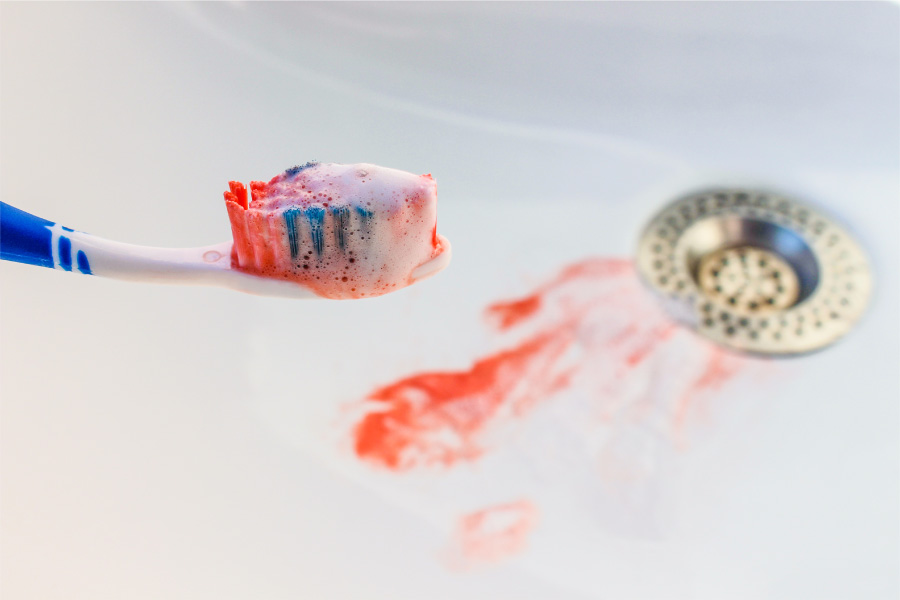You’re flossing your teeth and notice blood. What does this mean? Odds are, you have gum disease. According to info from the CDC, just over 47% of people 30 and older have some form of gum disease. Your risk increases as you age, but don’t despair! Here’s what to do if flossing makes your gums bleed:
Make an Appointment with Dr. Gallagher
Only a dentist can officially diagnose gum disease. At our office, we’ll learn how advanced the gum disease is and discuss what might be causing it. Most of the time, poor oral hygiene (like not flossing regularly) is to blame. If you smoke or use tobacco, your risk for gum disease goes up significantly. Certain medications and medical conditions can also increase your risk.
Improve Your Oral Hygiene Habits
If your gum disease is in an early stage, it can be quickly reversed with better brushing and flossing habits. Brush your teeth at least twice a day for two minutes each time. Be sure to clean right at the gum line. Keep flossing, too! Eventually, the bleeding will stop as your gum health improves.
Keep Up with Professional Cleanings & Exams
We can treat gum disease in our office with professional cleanings. If we need to do a deep clean, we’ll get below the gum line and remove bacteria buildup. Depending on how advanced the gum disease is, you might need to visit us more than twice a year for cleanings.
Treat Gum Disease at Overland Park Family Dental
Bleeding gums are just one symptom of gum disease. If untreated, gum disease can lead to painful infections, tooth loss, and even bone loss. As soon as you notice bleeding, it’s time to take action! With the right treatment, you can restore your gum health. If you have any questions or think you may have gum disease, please contact us today.

